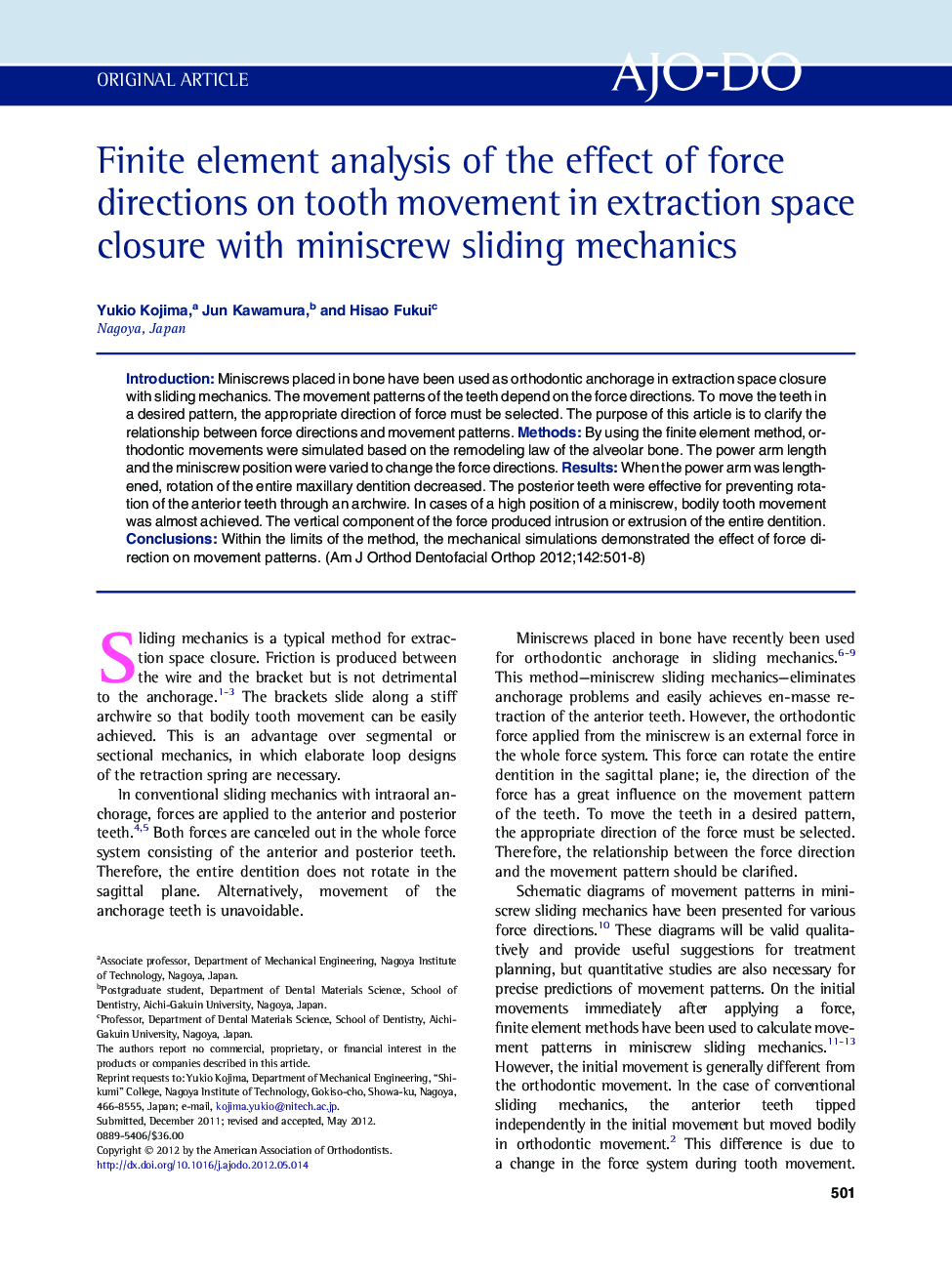| Article ID | Journal | Published Year | Pages | File Type |
|---|---|---|---|---|
| 3117021 | American Journal of Orthodontics and Dentofacial Orthopedics | 2012 | 8 Pages |
IntroductionMiniscrews placed in bone have been used as orthodontic anchorage in extraction space closure with sliding mechanics. The movement patterns of the teeth depend on the force directions. To move the teeth in a desired pattern, the appropriate direction of force must be selected. The purpose of this article is to clarify the relationship between force directions and movement patterns.MethodsBy using the finite element method, orthodontic movements were simulated based on the remodeling law of the alveolar bone. The power arm length and the miniscrew position were varied to change the force directions.ResultsWhen the power arm was lengthened, rotation of the entire maxillary dentition decreased. The posterior teeth were effective for preventing rotation of the anterior teeth through an archwire. In cases of a high position of a miniscrew, bodily tooth movement was almost achieved. The vertical component of the force produced intrusion or extrusion of the entire dentition.ConclusionsWithin the limits of the method, the mechanical simulations demonstrated the effect of force direction on movement patterns.
